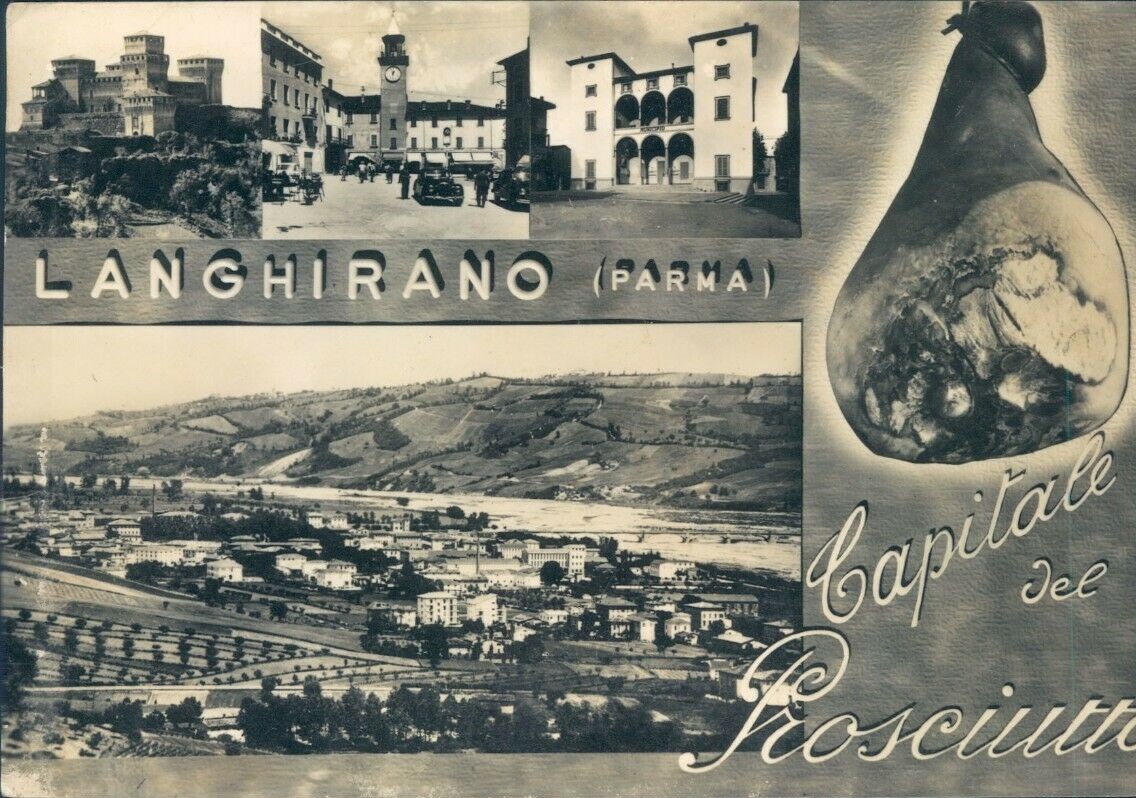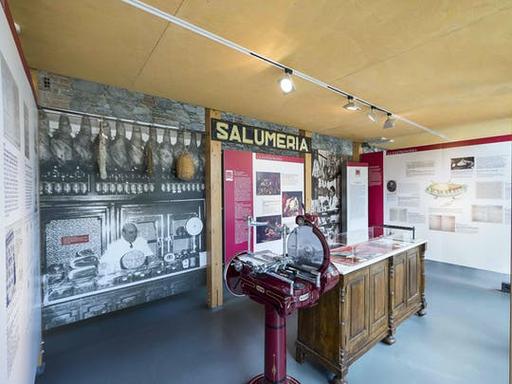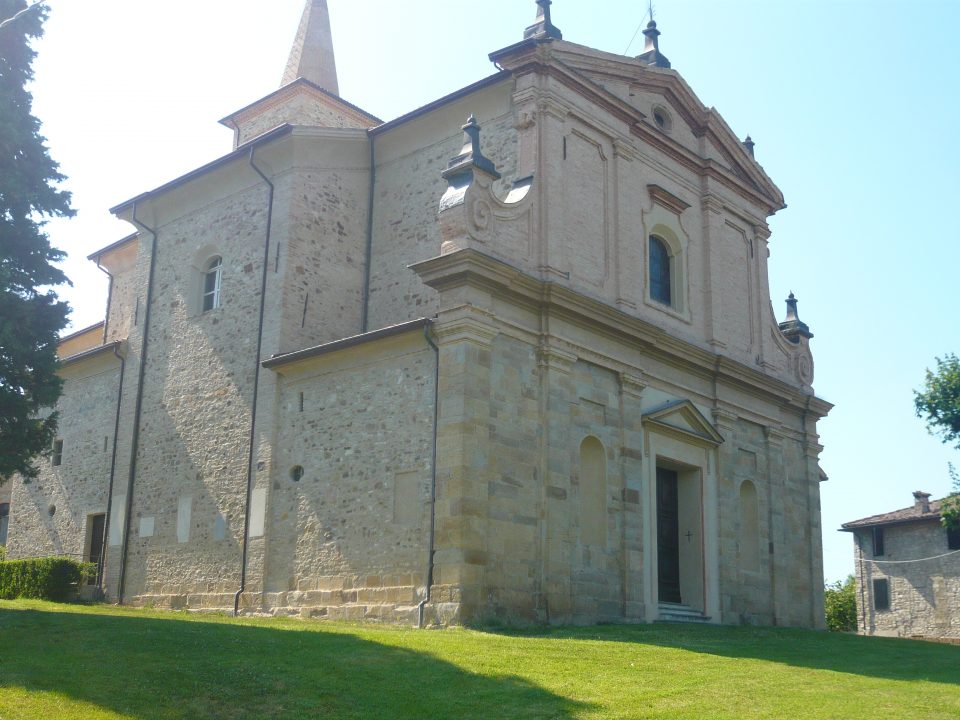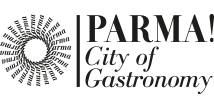
1. WHAT TO SEE -
2. WHAT TO DO - Where to collect the Credential - Visit the production sites of ham, Parmigiano Reggiano, Colli di Parma wine
3. WHERE TO SLEEP
4. WHERE TO EAT
PER TORNARE ALLA PAGINA GENERALE DEL CAMMINO VIA DI LINARI, cliccare qui: CAMMINO Via di Linari
TO RETURN TO THE GENERAL PAGE OF THE VIA DI LINARI WAY, click here: Cammino Via di Linari
PER CONTINUARE IL VIAGGIO E SAPERNE DI PIU' SUL PROSSIMO APPUNTAMENTO LUNGO IL CAMMINO, cliccare qui: L'Abbazia di San Basilide
TO CONTINUE THE JOURNEY AND FIND OUT MORE ABOUT THE NEXT APPOINTMENT ALONG THE WAY, click here: L'Abbazia di San Basilide
***
 Siamo nel cuore della produzione mondiale del rinomato Prosciutto crudo di Parma, che potrete assaggiare nei locali del paese o nei luoghi di produzione, prenotando una visita.
Siamo nel cuore della produzione mondiale del rinomato Prosciutto crudo di Parma, che potrete assaggiare nei locali del paese o nei luoghi di produzione, prenotando una visita.
Nel capoluogo c’è il Museo del Prosciutto, molto interessante per conoscere la storia di un’eccellenza alimentare che ha duemila anni di età, infatti già i Romani ne apprezzavano le qualità.

We are in the heart of the world production of the famous Parma ham, which you can taste in the town halls or in the places of production, by booking a visit
Nearby is the Ham Museum, very interesting for learning about the history of a food excellence that is two thousand years old, in fact the Romans already appreciated its quality.
Langhirano sorge su una piccola collina posta sulla sponda sinistra del torrente Parma, un territorio abitato fin dal Paleolitico, all'incirca al 130000 a.C., mentre i primi insediamenti umani furono fondati dai Terramaricoli tra il XVII e il XIV secolo a.C., in piena età del bronzo
Dell'epoca romana sopravvivono ancora alcune tracce della centuriazione del territorio pianeggiante e i resti di una villa rinvenuta nei pressi di Torrechiara.
Il primitivo borgo di "Lagorano", menzionato per la prima volta nel 1038, fu fondato nell'Alto Medioevo dai Longobardi. Il centro nacque originariamente quale borgo minore, annesso alla vicina Mattaleto che era l’avamposto fortificato del castello di Castrignano.
Nel XIII secolo fu edificato il Palazzo del capitano di giustizia nel centro di Langhirano e il piccolo borgo da allora accrebbe notevolmente la propria importanza grazie alla posizione di accesso alla vallata, che gli consentì di diventare sede di mercato settimanale.
Nel periodo napoleonico all’inizio dell’800, Langhirano divenne sede del Comune in seguito all’abolizione dei feudi.
Langhirano stands on a small hill on the left bank of the Parma stream, an area inhabited since the Paleolithic, around 130000 BC, while the first human settlements were founded by the Terramaricoli between the 17th and 14th centuries BC, in full Bronze age
Some traces of the centuriation of the flat territory still survive from the Roman era and the remains of a villa found near Torrechiara.
The primitive village of "Lagorano", mentioned for the first time in 1038, was founded in the early Middle Ages by the Lombards. The center was originally born as a minor village, annexed to nearby Mattaleto which was the fortified outpost of the Castrignano castle.
In the 13th century the Palazzo del Capitano of justice was built in the center of Langhirano and the small village has since then considerably increased its importance thanks to the access position to the valley, which allowed it to become the site of an important weekly market.
In the Napoleonic period, at the beginning of the 19th century, Langhirano became the seat of the Municipality following the abolition of the fiefdoms.
1. WHAT TO SEE
Nel centro abitato di Langhirano potete visitare i seguenti luoghi notevoli:
In the town of Langhirano you can visit the following remarkable places:
Museo del Prosciutto
 Il Museo del Prosciutto e dei salumi parmigiani, ha la sua sede proprio qui a Langhirano nella vasta struttura dell’ex Foro Boario, un’area situata fra il centro storico di Langhirano e il torrente Parma. All'interno del complesso integralmente restaurato, nella splendida architettura rurale del Novecento storicamente destinata alla contrattazione del bestiame, va ora in scena il racconto di questa popolare passione e importantissima attività produttiva.
Il Museo del Prosciutto e dei salumi parmigiani, ha la sua sede proprio qui a Langhirano nella vasta struttura dell’ex Foro Boario, un’area situata fra il centro storico di Langhirano e il torrente Parma. All'interno del complesso integralmente restaurato, nella splendida architettura rurale del Novecento storicamente destinata alla contrattazione del bestiame, va ora in scena il racconto di questa popolare passione e importantissima attività produttiva.
Dal 1997 Langhirano è la sede principale del Festival del prosciutto di Parma, che si svolge ogni anno generalmente nelle prime due settimane di settembre. Durante le giornate del Festival è possibile visitare i numerosi salumifici del territorio dove si effettua la lavorazione del prosciutto di Parma, oltre che a partecipare a svariati eventi culinari e degustazioni lungo le vie del paese. Spazio anche a dibattiti e incontri con esperti del settore, oltre che all'intrattenimento con ospiti musicali e del mondo dello spettacolo.
Parma Ham Museum
The Parma Ham and Salami Museum has its headquarters right here in Langhirano in the vast structure of the former Foro Boario, an area located between the historic center of Langhirano and the Parma stream. Inside the fully restored complex, in the splendid rural architecture of the twentieth century historically used for the bargaining of livestock, the story of this popular passion and very important productive activity is now staged.
Since 1997 Langhirano has been the main venue of the Parma Ham Festival, which generally takes place every year in the first two weeks of September. During the days of the Festival it is possible to visit the numerous salami factories in the area where Parma ham is processed, as well as to participate in various culinary events and tastings along the streets of the town. There is also space for debates and meetings with industry experts, as well as entertainment with musical and show business guests.
Museo del Risorgimento "Faustino Tanara"
Collocato all'interno dell'ex Macello storico, il museo è suddiviso in due sezioni dedicate alla storia del Risorgimento, concentrandosi in particolare sul garibaldino Faustino Tanara e sulle due Società di mutuo soccorso di Langhirano.
Museum of the Risorgimento "Faustino Tanara"
Located inside the former historic slaughterhouse, the museum is divided into two sections dedicated to the history of the Risorgimento, focusing in particular on the Garibaldian Faustino Tanara and the two mutual aid societies of Langhirano.
Chiesa dell'Annunciazione di Maria Vergine
Edificata originariamente in stile barocco tra il 1578 e il 1579 quale oratorio dipendente dalla chiesa parrocchiale di San Michele Arcangelo di Mattaleto, la chiesa fu dotata di una nuova facciata neobarocca tra il 1908 e il 1913. Eretta a parrocchia nel 1944, fu notevolmente ampliata in senso longitudinale.
Church of the Annunciation of the Virgin Mary
Originally built in Baroque style between 1578 and 1579 as an oratory dependent on the parish church of San Michele Arcangelo di Mattaleto, the church was equipped with a new neo-baroque facade between 1908 and 1913. Built as a parish in 1944, it was considerably widened in the longitudinal direction.
Chiesa di San Michele Arcangelo di Mattaleto
 Menzionata per la prima volta nel 1230, la chiesa romanica di Mattaleto fu interamente ricostruita il stile barocco tra il 1715 e il 1723 , conservando soltanto l'originario campanile. Completamente restaurata e decorata internamente tra il 1883 e il 1886, costituì fino al 1944 l'unica parrocchia di Mattaleto e Langhirano.
Menzionata per la prima volta nel 1230, la chiesa romanica di Mattaleto fu interamente ricostruita il stile barocco tra il 1715 e il 1723 , conservando soltanto l'originario campanile. Completamente restaurata e decorata internamente tra il 1883 e il 1886, costituì fino al 1944 l'unica parrocchia di Mattaleto e Langhirano.
Church of San Michele Arcangelo of Mattaleto
Mentioned for the first time in 1230, the Romanesque church of Mattaleto was entirely rebuilt in the Baroque style between 1715 and 1723, keeping only the original bell tower. Completely restored and decorated internally between 1883 and 1886, it constituted the only parish of Mattaleto and Langhirano until 1944.
2. WHAT TO DO - Where to collect the Credential - Visit the production sites of ham, Parmigiano Reggiano, Colli di Parma wine
3. WHERE TO SLEEP
4. WHERE TO EAT


